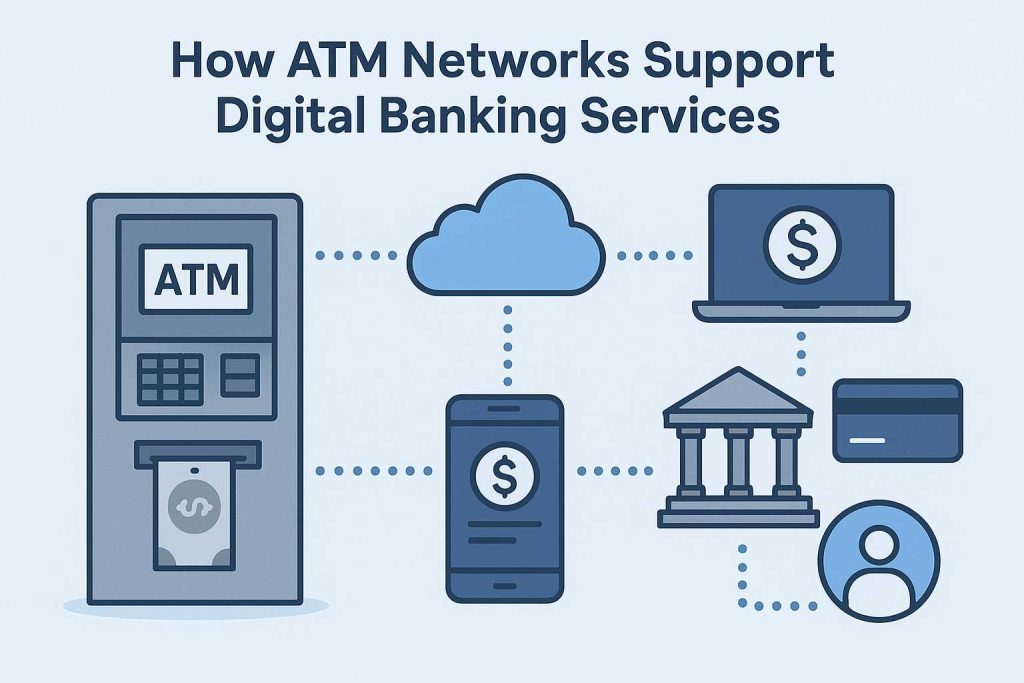So, have you ever wondered how those magical machines at banks called atm equipment (Automated Teller Machines) work? They allow people to withdraw money, check their balances, and sometimes even deposit money. However, that is pretty cool. But just like your favourite video game console or your tablet, ATMs need to be updated and upgraded to keep them running smoothly and safely. So, today, we’re going to dive into the world of ATMs and learn all about when and how these machines get their upgrades.
What is an ATM?
So, before we jump into the upgrading part, let’s understand what an ATM is and how it works. Therefore, an ATM is a machine that helps people access their bank accounts without having to go inside a bank. However, here’s what you can do with an ATM:
- Withdraw Cash: Need some pocket money? You can take out cash from your account.
- Deposit Money: Got some extra cash or a check? You can deposit it into your account.
- Check Balance: Want to know how much money you have? The ATM can tell you.
- Transfer Funds: You can move money between your accounts.
- Connectivity: ATMs are connected to the bank’s computer system, which makes all this possible.
Why Do ATMs Need Upgrades?
So, just like your favourite gadgets, ATMs also need to be kept up-to-date. However, here are some reasons why:
- Security: As technology gets better, so do the tricks that bad guys use to steal money or information. Upgrading ATMs helps keep them secure.
- Speed: Newer software and hardware can make ATMs faster and more efficient.
- New Features: Upgrades can add new features to ATMs, making them more useful.
- Compliance: Banks need to follow certain rules and regulations. Upgrades help ATMs meet these standards.
When Do ATMs Need Upgrades?
So, there are specific times when it’s necessary to upgrade ATMs. However, let’s look at some of these:
- Technological Advances: When new technology is available, it’s time for an upgrade.
- End of Support: When the company that made the atm equipment or its software stops supporting it, banks need to upgrade to avoid problems.
- Regulatory Changes: New laws or regulations might require changes to ATM hardware or software.
- Customer Feedback: If customers are unhappy with the ATM experience, banks might upgrade to improve it.
- Maintenance Issues: If an ATM breaks down frequently, it’s a sign that an upgrade might be needed.
How Are ATMs Upgraded?
So, upgrading an ATM is more complex than updating an app on your phone. However, it involves several steps and considerations. So, let’s walk through the process:
1. Planning
So, before any upgrade, banks need to plan carefully. Therefore, this involves:
- Assessing Needs: Understanding why the upgrade is needed.
- Budgeting: Figuring out how much the upgrade will cost.
- Choosing Technology: Deciding what new hardware or software to use.
2. Testing
So, banks only install new software or hardware after testing it first. Therefore, they set up a test environment to ensure everything works properly, which helps avoid problems when the upgrade is rolled out to all ATMs.
3. Scheduling
So, upgrades need to be scheduled to minimize disruption to customers. Therefore, this often means doing the work at night or during weekends when fewer people are using ATMs.
4. Implementation
So, this is the actual process of installing new software or hardware. Therefore, technicians might visit each ATM machines or do some upgrades remotely.
5. Monitoring
So, after the upgrade, banks closely monitor the ATMs to ensure they are working correctly. Therefore, they check for any issues and fix them as quickly as possible.
Types of ATM Upgrades
ATMs might need different upgrades. Let’s look at some of them:
1. Software Upgrades
So, software is what makes the atm equipment run. Moreover, upgrading the software can:
- Improve Security: Adding new security features to protect against hackers.
- Add New Features: Introducing new services like mobile wallet integration.
- Fix Bugs: Repairing any issues that make the ATM work poorly.
2. Hardware Upgrades
So, hardware is the physical part of the ATM. Moreover, upgrading the hardware can:
- Increase Speed: Faster processors can make transactions quicker.
- Enhance User Experience: Better screens or touchpads can make the ATM easier to use.
- Improve Reliability: Newer parts can break down less often.
3. Network Upgrades
So, ATMs need a strong connection to the bank’s systems. Therefore, upgrading the network can:
- Boost Speed: Faster connections mean quicker transactions.
- Increase Security: More secure connections can protect customer data.
- Enhance Reliability: Better networks can reduce downtime.
Conclusion
So, upgrading atm parts equipment is crucial to keeping these machines safe, efficient, and user-friendly. Moreover, from planning and testing to implementation and monitoring, each step is important to ensure a smooth upgrade process. As technology continues to advance, ATMs of the future will offer even more features and conveniences. So, next time you use an ATM, remember the incredible work that goes into keeping it up-to-date and running smoothly.




